Interview with Chef Sean Brock – Charleston, SC and a recipe for Hoppin’ John
When Brock came to Charleston in 1997 to attend Johnson and Wales, he was excited to be in the same city with great chefs like Louis Osteen, Robert Carter and Bob Wagonner. He studied the cuisine of Charleston. One of the dishes that left him unimpressed was Hoppin’ John. It tasted like cardboard and he couldn’t understand what the excitement was over this dish. What could possibly be good about Uncle Ben’s white rice and black eyed peas that were stale and dry?
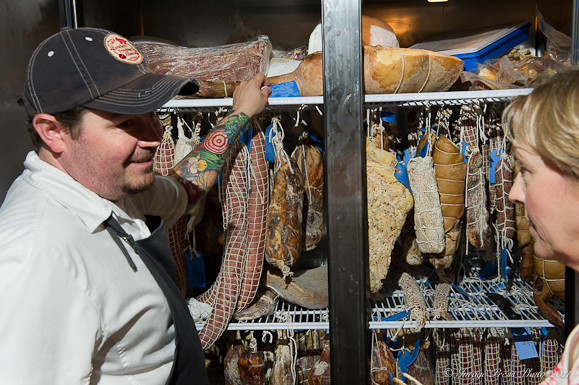
The problem was that it wasn’t the authentic dish. It was missing the historical link to the proper ingredients for the dish: Carolina Gold Rice and Sea Island Red Peas. Every chef in the city should have been serving the original version, but they weren’t because the ingredients were no longer available and they substituted easily available ingredients.
Brock refers to the Hoppin’ John theory as a perfect representation of our current food situation. To paraphrase Chef Brock, certain traditional dishes are still demanded although they are not authentic. When you start with poor ingredients and there is little passion in preparing the food, you end up with a bad representation of what the dish should be. This is why we must go back to the original ingredients and recreate these flavor profiles.
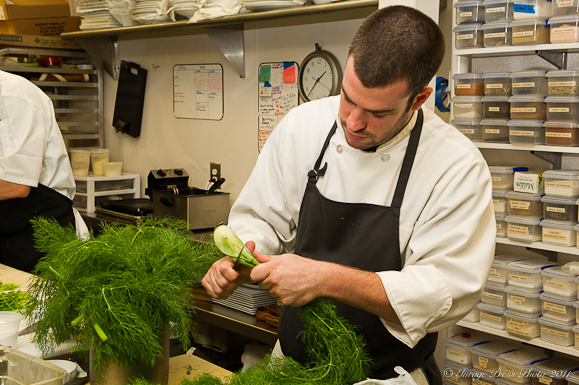
The chefs at McCrady’s have beautiful local produce to work with
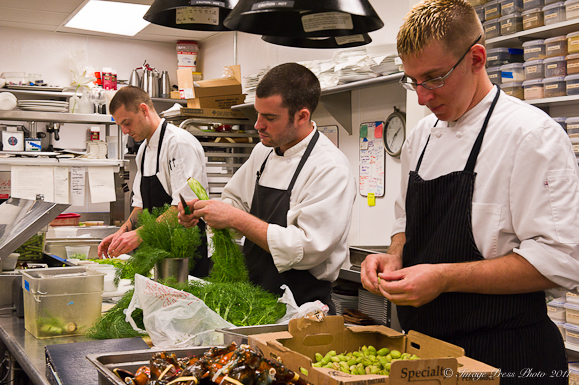
All of the ingredients were gorgeous
Rice came to Charleston by accident in 1681. A storm blew a damaged ship from Africa into port and the repairs for the ship were paid for in rice seed. Two farmers planted the seed and found that it grew quite well in Charleston since the climate was similar to that of Western Africa. This rice became known as Carolina Gold Rice.
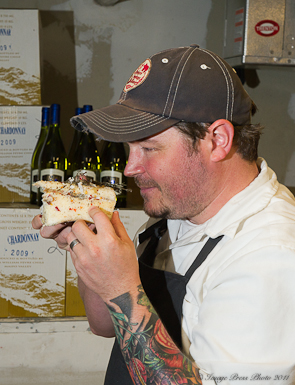
Lardo that has been aging in Pappy Van Winkle casks
Golden fields of rice, hundreds of miles long, were once visible along the coastline of South Carolina and Georgia. In fact, at one time there were over 100 varieties of rice grown in this area. Rice was one of the reasons there was so much wealth in Charleston. However, that all changed when the last of the Carolina Gold Rice was harvested in the late 1920’s due to overproduction, collapse of the market, lack of available laborers and to make way for crop rotation to improve the soil.
The workers (slaves) that were brought from Africa in the 1700’s and 1800’s had a vast knowledge of agriculture and crop rotation and used the Cowpea (brought over from Africa) as an essential source of nitrogen for the soil. They were growing these peas, but they were mostly used for animal feed or fertilizer and for many years never made it to the main house as food. (The main house was known as The Big House to the slaves.)
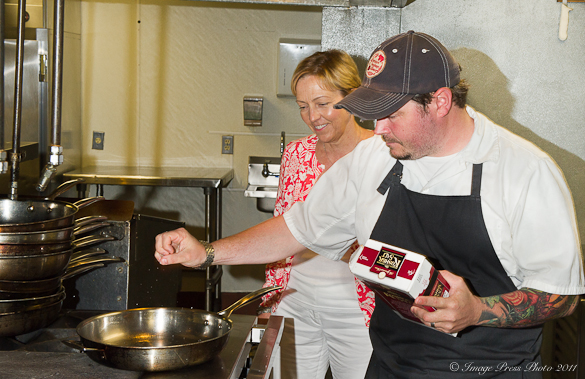
Chef Brock prepared ramps for us at McCrady’s
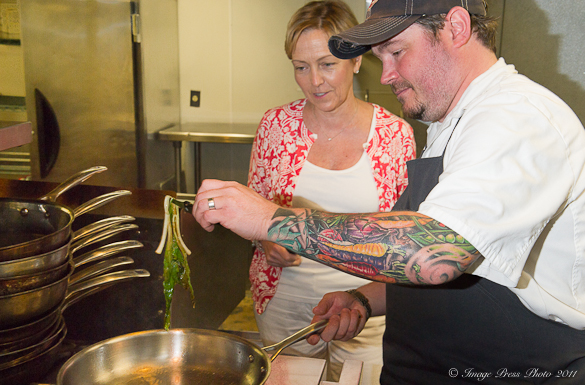
I can understand why they are one of his favorite things to eat
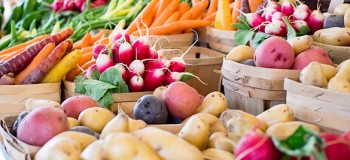







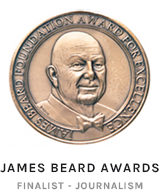







We make Hoppin’ John every New Year’s Day as well.
How cool that you tried it with the local varietals! I’m sure it was well worth it!
Hi Susan,
You should try this recipe made with the heirloom ingredients. There was no comparison to what I made with the Carolina Gold Rice and Sea Island Red Peas with what I have had in the past. 🙂
Gwen
This is a really interesting piece – I love Chef Brock’s use of heirloom seed to grow food that he prepares. Beautiful piece, terrific pictures, thank you!
Thank you, Lynn. We had a great visit with Chef Brock and the discussions about our current food situation were truly inspiring.
Facinating interview. It’s wonderful seeing more and more chefs with their own farms and gardens, Farmers’ Markets cropping up everywhere, and heirloom varieties more readily available. It makes eating out and cooking at home more interesting, enjoyable, and healthy. And that’s quite a work of art on Chef’s arm!
Hi Denise,
I know you and John appreciate great ingredients and the difference it makes in our cooking. I hope that these interviews make more people aware of the incredible chefs that are out there championing bringing back the heirloom foods that should be available to us. It is what is normal and what is right.
Gwen
A friend of mine works at Husk and has been telling me of how I should make a little culinary trip to SC! After reading this, I definitely want to! Thanks for sharing!
Sean Brock is, in my opinion, the best chef on the planet. We ate at McCrady’s Valentine’s Day, 2010 and the menu was spectacular. I am dying to get back to Charleston and try Husk. His appreciation for heirlooms, animal treatment and food in general is a lesson for us all, professional chefs and home cooks alike!
So great of you Gwen to focus on this chef and the cause of bringing back regional ingredients.
I remember when I posted my recipe for Hoppin’ John I came across this and thought you might enjoy as to one explanation of the origin of its name – “reported by Raymond Sokolov, former Food Editor of the New York Times, that the dish goes back at least as far as 1841, when, according to oral tradition, it was hawked in the streets of Charleston, South Carolina, by a crippled black man who was known as Hoppin’ John.”
Hi Drick,
Thank you for your comment. I thought you might enjoy this interview. I did come across several theories on the origins of Hoppin’ John and that was one of them. I guess we will never know how it really happened, but when made with Carolina Gold Rice and Sea Island Red Peas, I am glad that someone created the dish!
Gwen
What an interesting interview. It is so refreshing to hear of someone with such a passion for bringing back our “heritage” food products. I have been saying for years that our foods just don’t taste like they used to and it’s entirely because of the mass production and marketing of easily produced inferior products. I grew up on a farm where we had our own chickens, cows and pigs along with a large garden every years. Sadly, I no longer have access to those local products. Even many of the local “produce stands” and farmers markets aren’t really selling locally produced goods.
We just happen to be going to Charleston this weekend. Guess where we’ll be dining?
Hi Lana,
Thank you so much for your thoughtful comment. I totally agree. and yes, unfortunately, the Farmer’s Markets are not all selling locally sourced produce. Our food is so bland now that we are having to use more spices and salt just to get any flavor from the dishes. It is so sad that no one knows how food is really supposed to taste.
Some of the best meals we have had are made with locally sourced produce and humanely raised animals. It tastes like food should and doesn’t need all the extra seasonings.
Enjoy your trip to Charleston! We love the city and so many restaurants there are fabulous! Let me know if you need any other recommendations other than Chef Brock’s restaurants (and I highly recommend both of those). 🙂
Gwen
What a wonderful and educational review about a topic that is so dear to my heart. I’m ordering the rice and beans right now! Thanks, Gwen!
I love the Anson Mills site–thanks for the link. I just ordered a ton of goodies to bake with. Yum!
Hi Carolyn,
Thank you for the comment and I am so glad you ordered some items from Anson Mills. You will be hooked! Enjoy. 🙂
Gwen
I finally made it to Charleston for the first time in March. Amazing! I can’t wait to go back. I was able to take a culinary tour and while we didn’t go to Husk, we did hear all about it. Excellent interview and photos! Gives me even more reason to return.
Gwen – wonderful interview!
I agree that we’ve been dumbed down with that’s mass produced. I had to travel to Ojai to taste the most beautiful strawberries I’ve ever tasted… because they were so delicate they’d never make the drive down to where I live.
I also had a dream last night that the RGB was open, and were raising chickens both for eggs and for meat that were serving right back in the bistro. By the sounds of this interview, that is quite possible, yes?!
How about doing another On the Road tour to this place so I can come along this time?!
[K]
Making my hoppin’ John right now. The beans smell amazing. I love how little and perfect they are.
The verdict? The best Hoppin’ John we’ve ever tasted. Please tell Chef we loved it, and thank you for sharing. It’s well worth ordering the ingredients you recommended to have a sample of the rich, original flavors. We have given up so much, and it’s great to bring it back.
Oh what a wonderful write-up! I love Husk, and make a point of eating there every time I’m in Charleston. So wonderful to see this as I plan my next Charleston trip!